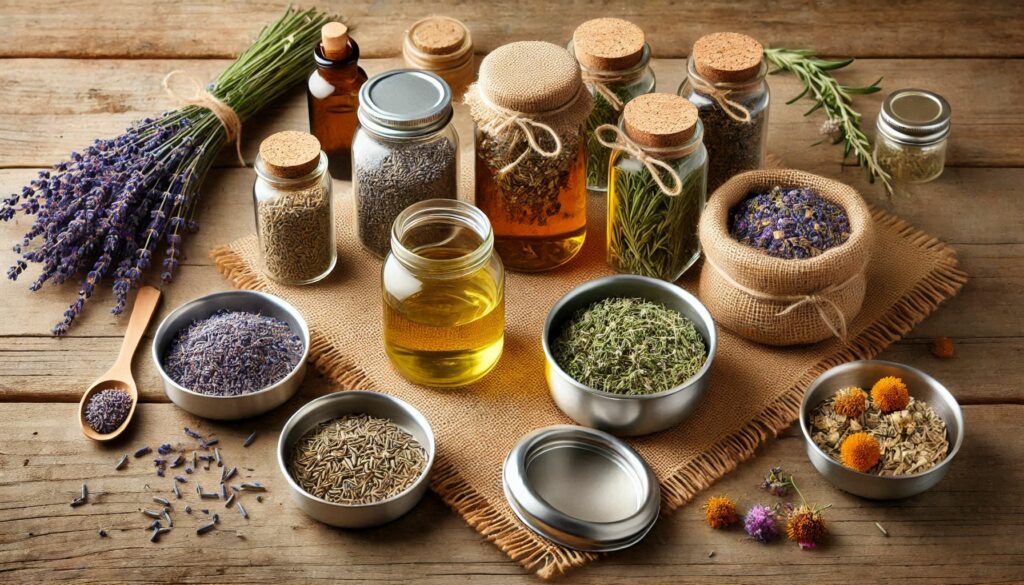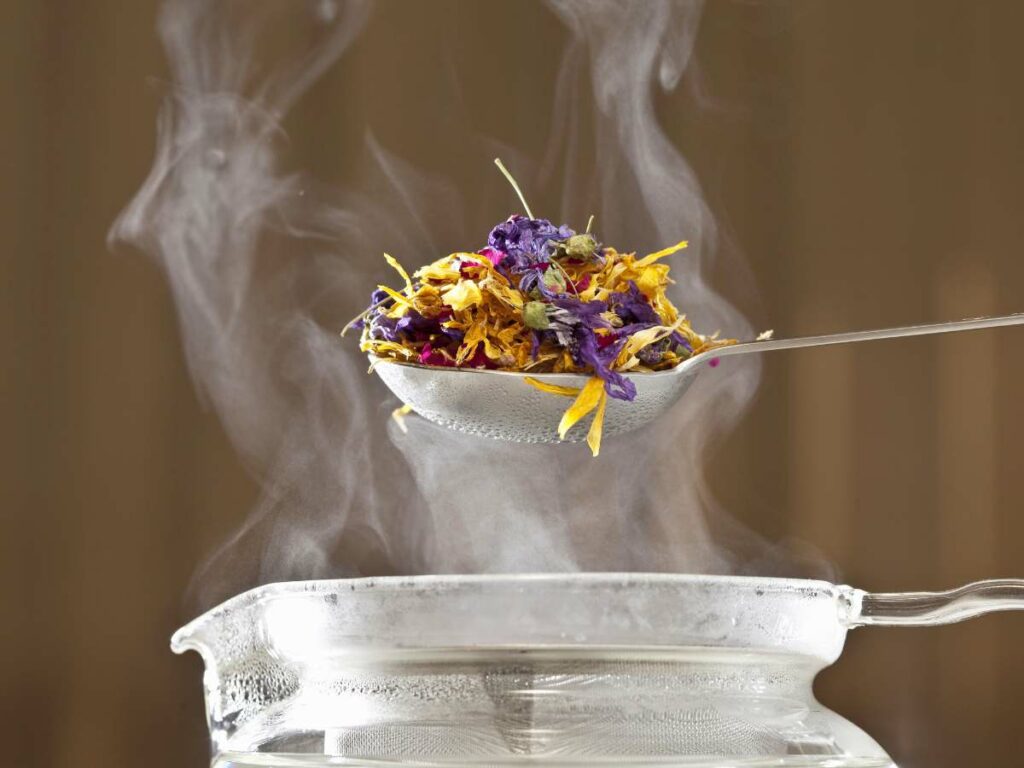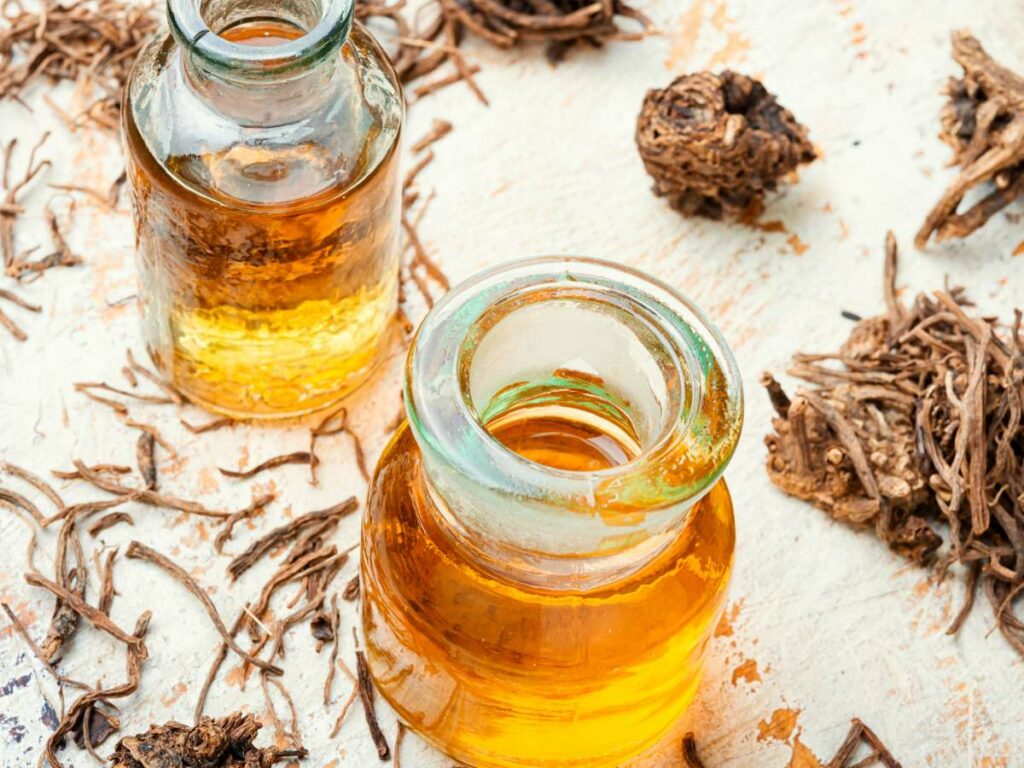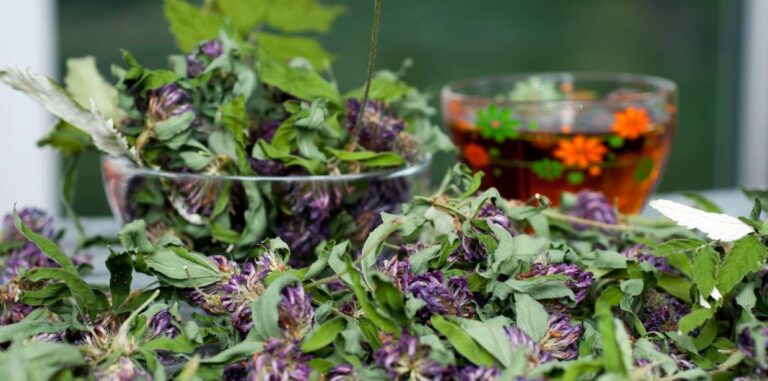Introduction
Making your own herbal remedies can be a rewarding and cost-effective way to take control of your health and well-being. By growing, harvesting, and drying your own herbs, you can ensure that you’re using the freshest and most potent ingredients in your remedies. In addition to growing herbs, you’ll also learn how to make herbal teas and tinctures, which can be used to alleviate a wide range of ailments. Whether you’re interested in natural medicine or simply want to explore a new hobby, this blog post will provide you with the information and guidance you need to get started.

Understanding the benefits of herbal remedies
Incorporating herbal remedies into your wellness routine can offer numerous benefits for your health and well-being. Unlike conventional medications, which often come with a range of side effects, herbal remedies are generally considered safe and gentle on the body. They can provide relief from various ailments, including digestive issues, insomnia, stress, and minor aches and pains.
One of the key advantages of herbal remedies is their natural composition. By using plants that are grown without chemicals or pesticides, you can be confident that you’re consuming pure and unadulterated ingredients. This factor alone makes herbal remedies an attractive option for those seeking a holistic approach to health.
Additionally, herbal teas and tinctures often contain high concentrations of beneficial compounds and antioxidants that can support your immune system and overall vitality. These natural substances work harmoniously with the body, assisting it in achieving balance and promoting optimal wellness.
Next, we will delve into the specific herbs and their properties that you can grow and use for making your own herbal remedies. Stay tuned to discover the incredible healing power of nature’s pharmacy.
Getting started: Growing and harvesting your own herbs
Growing and harvesting your own herbs not only allows you to have a fresh supply of ingredients at your fingertips but also gives you complete control over the cultivation process.
To start, select a sunny spot in your garden or balcony where your herbs will receive at least 6 hours of direct sunlight each day. Most herbs prefer well-drained soil, so make sure to prepare the planting area by adding compost or organic matter to improve soil fertility.
When it comes to choosing which herbs to grow, consider your personal health needs and preferences. Popular herbs for making herbal remedies include chamomile, mint, lavender, lemon balm, and rosemary. Each herb possesses unique properties and flavors that can enhance the effectiveness and taste of your remedies.
Once your herbs have grown to a sufficient size, it’s time to harvest them. This is best done early in the day when the essential oils are most concentrated. Simply snip off the desired amount of leaves or flowers, being careful not to remove more than one-third of the plant at a time.
The art of drying herbs for maximum potency
In order to preserve the potency of your freshly harvested herbs, drying them properly is crucial. There are several methods you can choose from, depending on the type of herb and the available resources.
One common method is air drying, which involves tying your herb sprigs together and hanging them upside down in a warm, well-ventilated area. This allows the moisture to slowly evaporate while maintaining the herb’s flavor and medicinal properties.
Another option is using a food dehydrator, which provides controlled temperature and airflow to speed up the drying process. This method is particularly useful for herbs that are more delicate and prone to mold, such as basil or cilantro.
If you’re looking for a quick-drying method, an oven can be used at low temperatures. Spread the herb sprigs on a baking tray lined with parchment paper and bake them for a short period of time, checking often to prevent burning.
Regardless of the method you choose, it’s important to store your dried herbs properly to maintain their potency. Keep them in airtight containers away from direct sunlight and moisture.
Creating homemade herbal teas

Now that you have successfully dried your herbs, it’s time to put them to good use by creating your own herbal teas. Making herbal teas is a wonderful way to enjoy the soothing and healing properties of your herbs while exploring different flavors and combinations.
To make a basic herbal tea, simply add a teaspoon of dried herbs per cup of hot water and let it steep for about 10 minutes. However, feel free to experiment with different herb ratios and steeping times to find your preferred strength and taste.
If you’re looking to target specific wellness concerns, you can create herbal tea blends by combining different herbs with complementary benefits. For example, a calming blend could include dried chamomile, lavender, and lemon balm. Try mixing dried peppermint, lemon verbena, and rosemary for a refreshing blend.
Mastering the art of making herbal tinctures
While herbal teas are a wonderful way to enjoy the benefits of your dried herbs, another method of using herbs medicinally is through tinctures. A tincture is a concentrated liquid extract that preserves the plant’s active compounds for extended periods. Making your own herbal tinctures is simple and allows you to have a potent and long-lasting remedy.
To make an herbal tincture, you’ll need a high-proof alcohol such as vodka or brandy, dried herbs, and a glass jar. Fill the jar with your chosen herbs, ensuring they are completely covered by the alcohol. Seal the jar tightly and allow it to sit in a cool, dark place for at least six weeks, shaking it occasionally to enhance extraction.
After the steeping period, strain the liquid through a cheesecloth or fine mesh strainer, and voila! You have your own herbal tincture ready to be used. Tinctures can be taken orally by diluting a few drops in water, juice, or tea or applied topically to the affected area.

Let’s check out the awesome benefits of herbs in tinctures for our health and wellness. Get ready to enhance your herbal remedy collection with these powerful herbs:
1. Echinacea:
– Boosts the immune system, protecting against colds, flu, and respiratory infections.
– Reduces symptoms of rheumatoid arthritis and other inflammatory conditions as an anti-inflammatory.
– Supports wound healing and helps with skin issues like acne and eczema.
2. Valerian:
– Promotes relaxation, reduces anxiety, aids in stress management, and improves sleep quality.
– Alleviates menstrual cramps and menopausal symptoms such as hot flashes and mood swings.
– Acts as a natural muscle relaxant for relief from tension headaches and migraines.
3. Ginger:
– Improves digestion by easing nausea, bloating, and indigestion.
– Relieves menstrual cramps and provides pain relief for arthritis or muscle soreness.
– Has powerful anti-inflammatory properties that help manage chronic conditions like osteoarthritis.
4. Chamomile:
– Calms the nervous system to reduce anxiety levels while promoting better sleep quality.
– Soothes digestive ailments such as indigestion, bloating, or irritable bowel syndrome (IBS).
– Possesses anti-inflammatory properties that bring relief to skin irritations like eczema or dermatitis.
5. Milk thistle:
-Supports liver detoxification while aiding in regenerating damaged liver cells.
-Beneficial for liver function by acting as an antioxidant — protecting against free radicals — thus lowering the risk of chronic diseases.
-Assists in managing various liver conditions such as fatty liver disease or hepatitis.
6. St. John’s Wort:
-Elevates serotonin levels in the brain to provide relief from mild to moderate depression symptoms
-Alleviates symptoms related to menopause including mood swings or insomnia.
-Could potentially benefit conditions such as hemorrhoids or arthritis due to its anti-inflammatory properties.
7. Peppermint:
-Relieves digestive issues such as bloating, gas, and irritable bowel syndrome (IBS).
-Helps alleviate tension headaches and migraines due to its muscle relaxant and analgesic properties.
– Demonstrates antibacterial and antiviral characteristics, which may aid in the treatment of respiratory infections.
These examples show just a glimpse of the fantastic variety of herbs commonly used in tinctures. Each herb has unique benefits that contribute to our health and well-being.
Safety considerations when working with herbal remedies
As with any form of natural medicine, it is important to approach herbal remedies with caution and ensure your safety when using them. While herbs can be incredibly beneficial for your health, it’s essential to understand their potential risks and take necessary precautions.
Here are a few safety considerations to keep in mind:
1. Research and consult professionals: Before using any herb, make sure to do thorough research or consult with a qualified herbalist or healthcare provider. They can provide valuable insights on dosage, interactions with medications, and potential side effects.
2. Allergies and sensitivities: Some individuals may have allergies or sensitivities to certain herbs. It’s crucial to be aware of any potential allergies you may have and check for allergic reactions when introducing new herbs into your routine.
3. Quality and sourcing: Ensure you are using high-quality herbs and ingredients that have been sourced from reputable suppliers. Organic and sustainably grown herbs are generally preferred to minimize exposure to pesticides and other chemicals.
4. Dosage and duration: Pay attention to recommended dosages and avoid exceeding them. Extended use of certain herbs may also have adverse effects, so be mindful of the duration of treatment.
5. Pregnancy and breastfeeding: Some herbs are contraindicated during pregnancy or while breastfeeding. It is essential to consult with a healthcare provider to ensure the safety of using herbal remedies during these times.
By keeping these safety considerations in mind, you can enjoy the benefits of herbal remedies while minimizing any potential risks. In the next section, we’ll delve into the specific herbs commonly used in tinctures and explore their individual properties and benefits. Stay tuned to enhance your knowledge and broaden your herbal remedy repertoire.
Empowering yourself through herbal remedies
By delving into the world of herbal remedies, you are empowering yourself to take control of your health and well-being in a natural and holistic way. The process of growing, harvesting, and drying your own herbs allows you to connect with nature and be more intentional about the remedies you create.
By taking the time to learn about and understand herbs, you are equipping yourself with the knowledge to make informed decisions about your health. So, embrace the power of nature and start your journey towards a healthier and more balanced life with herbal remedies.

